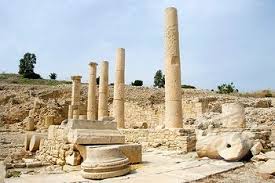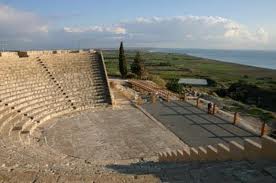
There is no doubt that Limassol Castle occupies the dominant position in the landmark and tourist attractions in the city. Richard the Lionheart is supposed to have married his fiancée Princess Berengaria of Navarre in this castle after her ship was grounded as she accompanied him to the Third Crusade, on his way to Holy Land. The Castle was used as a prison between 1790 and 1940 and it now serves as a medieval museum. The collection that the museum provides covers the era of 400 – 1870 AD. A visitor can see numerous exhibits: cannons, wood carvings of the 17th and 18th century, paintings and tombstones, statues, suits of armour, coins, terracotta, metalware and pottery, glass and marble articrafts.

The Archaeological Museum in Limassol is a particularly interesting sight for art and history lovers. The museum houses artefacts related to societal development of Cyprus, which include ceramics, pottery and antiquities from the Roman period. Also, on display are findings from the Neolithic until the Late Bronze Age. Sculptures, pottery, lamps and inscriptions with ancient Hellenistic and Roman koine catch the eye of many visitors.

The Municipal Garden, along the coastal road, has a rich bounty of green and shady space where visitors relax or take a stroll down
the pathways. The nearby area plays host to several family attractions like the Lemesos Zoo Garden and Dinosaur Park. This also includes a large open-air
garden theatre, where several events take place throughout the year.

The Twin Cities Park (or the Sculpture Park), situated on the waterfront, not far from the Public Garden, and spanning the more than
1,5 km long, is home to a series of sculptures commissioned by the Limassol Municipality and created by Cypriot, Greek, German, Israeli and Egyptian sculptors.

The ancient city of Amathus on the southern coast of Agios Tychonas is one of the oldest imperial cities on the island. There have been many myths behind the origin of this city, one of them believing in Cinyras as the city's founder, whose son Adonis named the city after his mother Amathus. Hellenic myth would have Amathus built by one of the sons of Heracles who was worshipped there. The city had a very special place for Aphrodite, the goddess of beauty and love. Visitors at the ruins can perceive an era that existed 3000 years ago, through the mythical excavations and artefacts.

The Kolossi Medieval Castle is situated in the village of Kolossi, 11 kilometres west of Limassol. A renowned archaeological site, the castle was built in the 15th century by the Knights of Saint John of Jerusalem on a land gifted by King Hugh I. Earlier, it used to be home to a 13th century fortress whose ruins are still visible in the castle. Later the castle was occupied by the Richard I of England and the Knights Templar.

The Kourion Archeological Site, located at 18 km west of Limassol near Episkopi village, is one of the most famous attractions in Cyprus. A stunning archaeological excavation, thanks to its impressive Greco-Roman theatre, stately villas, spectacular floor mosaics, an early Christian Basilica and other kingly treasures. Built in the 2nd century B.C. Kourion twin city through its various ruins reflects public life in Early Christian period.